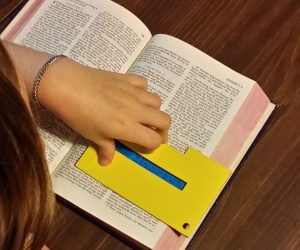Introduction Reading is an essential skill that lays the foundation for a student’s academic success and lifelong learning. Effective teaching methodologies play a crucial role in enhancing reading skills among students. Various teaching methods have been employed by educators to improve students’ reading abilities, each with its strengths and limitations. This article aims to explore
Introduction
Reading is an essential skill that lays the foundation for a student’s academic success and lifelong learning. Effective teaching methodologies play a crucial role in enhancing reading skills among students. Various teaching methods have been employed by educators to improve students’ reading abilities, each with its strengths and limitations. This article aims to explore and compare different teaching methodologies’ effectiveness in enhancing reading skills among students.
Phonics-Based Instruction
Phonics instruction focuses on the relationship between sounds and their corresponding written symbols. It teaches students to decode words by recognizing and manipulating the sounds of letters and letter combinations. Research indicates that explicit and systematic phonics instruction significantly improves early reading skills, especially decoding and word recognition. By breaking words into phonemes, students can understand the alphabetic principle and apply it to unfamiliar words. However, critics argue that overemphasizing phonics may hinder reading comprehension and fluency.
Whole Language Approach
Contrary to phonics, the whole language approach emphasizes meaning-making and comprehension over decoding. It encourages students to learn through authentic reading experiences, context, and exposure to complete texts. Advocates believe this approach fosters a love for reading and enhances comprehension by engaging students with meaningful content. However, critics argue that without explicit phonics instruction, students may struggle with decoding unfamiliar words, leading to difficulties in comprehension.
Balanced Literacy
Recognizing the strengths of both phonics and whole language, balanced literacy combines various instructional strategies. It integrates phonics, sight-word recognition, comprehension strategies, and exposure to authentic texts. This approach aims to provide a comprehensive reading program tailored to individual student needs. It offers flexibility by adjusting instruction based on students’ strengths and weaknesses. Proponents suggest that balanced literacy accommodates diverse learning styles and effectively develops well-rounded readers. However, implementation challenges and inconsistencies among educators in applying balanced literacy have been noted.

Image By:https://www.edutopia.org
Fluency-Oriented Reading Instruction
Fluency instruction focuses on improving reading speed, accuracy, and prosody. Techniques such as repeated reading, modeling, and providing feedback help students develop fluent reading skills. Fluent readers can better comprehend texts as they allocate less cognitive effort to decoding, allowing more attention to understanding the content. Research suggests that fluency instruction positively impacts reading comprehension. Nonetheless, critics argue that excessive emphasis on fluency might neglect the development of deeper comprehension skills.
Comparative Analysis
The effectiveness of teaching methodologies in enhancing reading skills depends on various factors, including students’ developmental stage, individual learning differences, and the instructional context. Phonics instruction appears beneficial for early readers, establishing foundational decoding skills. However, a balanced approach that incorporates phonics within a broader literacy framework seems more advantageous as students progress.Whole language approaches may foster a love for reading but could benefit from incorporating explicit phonics instruction to support decoding skills. Balanced literacy acknowledges the importance of both approaches, providing a tailored reading p rogram. Additionally, fluency-oriented instruction complements other methods, enhancing reading speed and comprehension.

Image By:https://www.edutopia.org
Conclusion
Enhancing students’ reading skills involves a multifaceted approach that acknowledges the strengths of various teaching methodologies. While no single method is universally superior, a balanced approach that integrates phonics, whole language elements, and fluency instruction seems most effective. Educators must employ a flexible and adaptive approach, considering individual student needs and combining various strategies to foster proficient and passionate readers. By understanding the impact of different teaching methods on reading skills enhancement, educators can develop comprehensive and tailored instructional practices that cater to diverse student populations, ultimately fostering a lifelong love for reading and improving overall academic success.

















Leave a Comment
Your email address will not be published. Required fields are marked with *